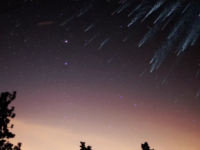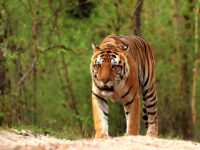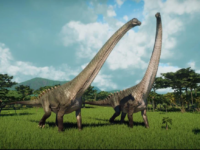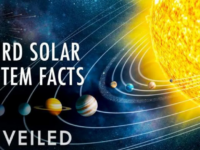Okay, let’s talk about something that actually matters but often gets overlooked in our “scroll till your thumb hurts” lifestyle — nature.
Yeah, that stuff outside your window? Trees, skies, rivers, mountains, little bugs crawling around, the wind that messes up your hair… that’s nature. And whether you’re a full-on hiking addict or someone who panics when a butterfly gets too close — nature is for everyone.
Let’s take a slow, chill walk through nature’s world and understand why it’s not just beautiful, but also kinda magical (and essential to our survival).
🌳 Nature is the Original Aesthetic
Before Pinterest, before VSCO, before fancy filters — there was nature.
Sunsets that turn the sky into literal art. Forests that change colors like they’re showing off. Waterfalls so dramatic they could star in a rom-com. And don’t even get me started on mountains. Like, who gave Earth the right to be this attractive?
- Sunrise = soft morning gold
- Rain = perfect cozy vibes
- Fields of flowers = better than any photo app filter
You could spend millions designing a home, but nothing beats a picnic under a tree or a beach day with salty hair and sandy toes. Nature didn’t need an upgrade. It came perfect.
🍃 Nature is Therapy. For Real.
Ever wonder why you feel calmer when you walk in a park or sit near the sea?
That’s not just in your head — it’s science. Being around nature lowers stress, boosts mood, helps with anxiety, and basically gives your overthinking brain a nice little reset. It’s like meditation, but with birds chirping in the background.
Here’s what nature casually does for you:
- Reduces stress hormones
- Improves focus and creativity
- Boosts immunity
- Gives your eyes a break from screens (which they desperately need)
The Japanese even have a term for it — “Shinrin-yoku”, or forest bathing. Just being in a forest, breathing that fresh air, hearing leaves rustle… it’s a mental detox. And it’s free. No subscription required.
🌼 Nature is a MasterChef
You know what else nature does incredibly well? Food.
Every single thing we eat came from nature at some point — apples, rice, spices, veggies, even your chocolate bar started as some plant or bean. No trees, no mangoes. No bees, no honey. No soil, no fries.
Even those Insta-worthy smoothie bowls owe everything to nature’s pantry. And let’s not forget water — the most underrated drink of all time.
We often forget that our kitchen literally starts with nature. Without healthy forests, clean rivers, and good soil — no crops, no fruits, no food. So yeah, nature feeds us and makes it look good.
🐾 Nature is Wild (Literally)
Let’s talk animals — because the natural world isn’t just green, it’s alive. And some of these creatures? Absolute legends.
- Sloths that move like they’re buffering.
- Octopuses with three hearts and mad escape skills.
- Elephants with emotions so deep, they actually mourn.
- Bees who dance to communicate.
- Penguins who gift pebbles to impress their crush.
Nature’s animals come in all shapes and weirdness levels — and that’s what makes it so cool. Each one plays a role in the ecosystem, whether it’s breaking down waste, pollinating crops, or keeping the food chain balanced.
And yes, even mosquitoes and spiders. (We might not like them, but nature needs them.)
🌍 Nature is Our Home — Not Just Background Scenery
Here’s the real talk: we’re not separate from nature. We are nature.
Humans tend to act like we live on Earth, not with it. But nature isn’t just this pretty backdrop we use for vacations or aesthetic Instagram photos — it’s our actual home.
The air we breathe? Trees made that.
The water we drink? Rivers, glaciers, rain.
The temperature that keeps us alive? Thank the ozone layer.
Our bones, blood, and brains? All made from Earth’s elements.
We’re nature in human form — walking, talking, shopping, meme-making mammals. But we still depend on the environment for everything.
😬 Humans vs. Nature: A Complicated Relationship
So, with all this amazingness, you’d think we’d treat nature like royalty, right? Yeah… not quite.
Here’s what we’ve been doing instead:
- Cutting down forests at record speed
- Polluting rivers, oceans, and skies
- Dumping plastic like there’s no tomorrow
- Killing species into extinction
- Warming the planet like it’s a microwave
Basically, we’ve been bad roommates to nature. Really bad.
But the good news? It’s not too late to fix it. Nature is super forgiving if we just chill out a little.
🌱 How to Be Nature’s BFF (It’s Not That Hard)
You don’t need to be a forest ranger or climate scientist to help nature out. Start small. Here’s how:
- Plant a tree or even a tiny plant on your balcony.
- Pick up litter when you see it. Don’t wait for someone else.
- Use less plastic — bring your own bottle or bag.
- Support local produce and eat more plants.
- Switch off lights and electronics when you’re not using them.
- Take a walk instead of driving for short trips.
- Talk about nature — tell your friends, post it, care about it.
Being eco-friendly doesn’t mean giving up everything fun. It just means being mindful of the fact that your actions matter. Because they do.
🌤️ Seasons: Nature’s Mood Swings
Nature’s also got a flair for drama — changing outfits every few months and keeping us on our toes.
- Spring: Nature’s version of a fresh start. Flowers blooming, birds chirping, pastel vibes everywhere.
- Summer: Bold, bright, a little sweaty. Perfect for beach days and mangoes.
- Autumn: Moody colors, falling leaves, sweaters and warm drinks.
- Winter: Snow, fog, and cozy blankets. Or mild sunshine if you’re in tropical places.
Every season has its own personality — and it shapes how we live, eat, dress, and feel. Nature literally affects our mood and routine.
🌈 Nature’s Tiny Details Hit the Hardest
You know what really makes nature special? The little things.
- That smell of rain on dry soil (called petrichor, by the way).
- The way sun rays sneak through tree leaves.
- Dew drops on grass in the early morning.
- The sound of waves crashing.
- Fireflies glowing like fairy dust at night.
- The way your pet curls up in a sunbeam.
None of it’s expensive. None of it’s man-made. But it sticks in your heart more than any luxury product ever could.
🌎 Final Thoughts: Let’s Not Take This for Granted
We live in the most insanely beautiful place in the universe — and we barely look up from our phones to notice it.
Nature isn’t just some optional luxury. It’s everything.
It gives us air, food, water, shade, peace, and joy. And all it asks in return is: please don’t ruin me.
So take the hike. Hug the tree. Watch the stars. Listen to the wind. Eat the fruit. Swim in the lake. And above all — protect the Earth like your life depends on it.
Because guess what?
It does.






































































































0 Comments